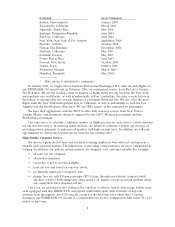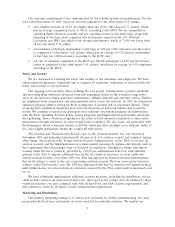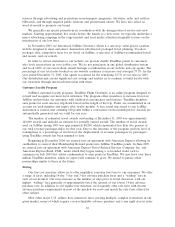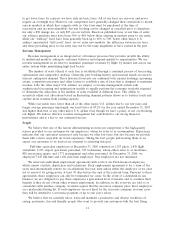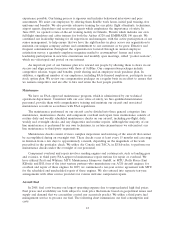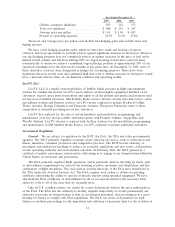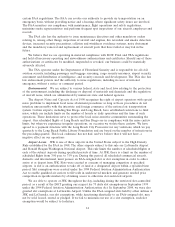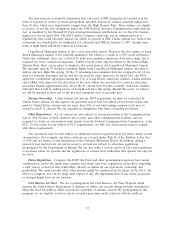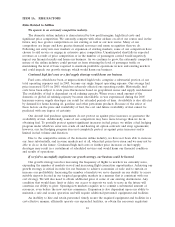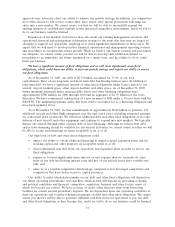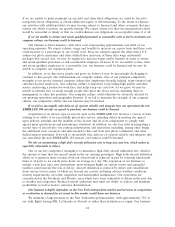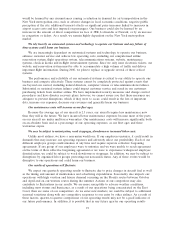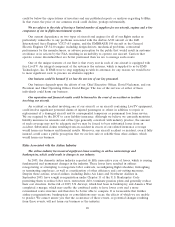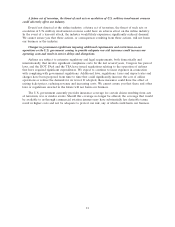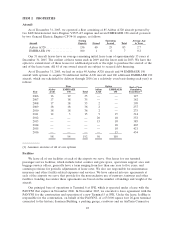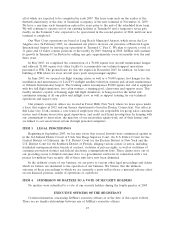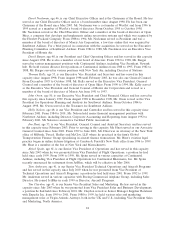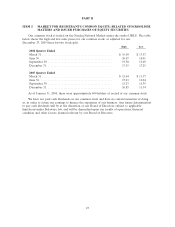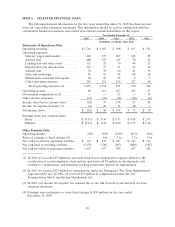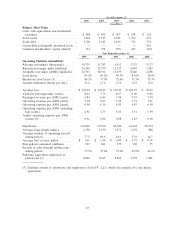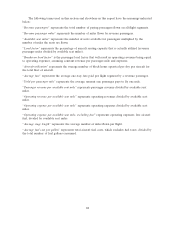JetBlue Airlines 2005 Annual Report Download - page 26
Download and view the complete annual report
Please find page 26 of the 2005 JetBlue Airlines annual report below. You can navigate through the pages in the report by either clicking on the pages listed below, or by using the keyword search tool below to find specific information within the annual report.If we are unable to make payments on our debt and other fixed obligations, we could be forced to
renegotiate those obligations or obtain additional equity or debt financing. To the extent we finance
our activities with additional debt, we may become subject to financial and other covenants that may
restrict our ability to pursue our growth strategy. We cannot assure you that our renegotiation efforts
would be successful or timely or that we could refinance our obligations on acceptable terms, if at all.
If we are unable to attract and retain qualified personnel at reasonable costs or fail to maintain our
company culture, our business could be harmed.
Our business is labor intensive, with labor costs representing approximately one-third of our
operating expenses. We expect salaries, wages and benefits to increase on a gross basis and these costs
could increase as a percentage of our overall costs. Since we compete against the other major U.S.
airlines for pilots, mechanics and other skilled labor and some of them offer wage and benefit
packages that exceed ours, we may be required to increase wages and/or benefits in order to attract
and retain qualified personnel or risk considerable employee turnover. If we are unable to hire, train
and retain qualified employees at a reasonable cost, our business could be harmed and we may be
unable to complete our expansion plans.
In addition, as we hire more people and grow, we believe it may be increasingly challenging to
continue to hire people who will maintain our company culture. One of our principal competitive
strengths is our service-oriented company culture that emphasizes friendly, helpful, team-oriented and
customer-focused employees. Our company culture is important to providing high quality customer
service and having a productive workforce that helps keep our costs low. As we grow, we may be
unable to identify, hire or retain enough people who meet the above criteria, including those in
management or other key positions. Our company culture could otherwise be adversely affected by
our growing operations and geographic diversity. If we fail to maintain the strength of our company
culture, our competitive ability and our business may be harmed.
If we fail to successfully take delivery of, operate reliably and integrate into our operations the new
EMBRAER 190 aircraft we agreed to purchase, our business could be harmed.
Acquisition of an all-new type of aircraft, such as the EMBRAER 190, involves a variety of risks
relating to its ability to be successfully placed into service, including delays in meeting the agreed
upon delivery schedule and the inability of the aircraft and all of its components to comply with
agreed upon specifications and performance standards. In addition, we also face risks in integrating a
second type of aircraft into our existing infrastructure and operations, including, among other things,
the additional costs, resources and time needed to hire and train new pilots, technicians and other
skilled support personnel. If we fail to successfully take delivery of, operate reliably and integrate into
our operations the new EMBRAER 190 aircraft, our business could be harmed.
We rely on maintaining a high daily aircraft utilization rate to keep our costs low, which makes us
especially vulnerable to delays.
One of our key competitive strengths is to maintain a high daily aircraft utilization rate, which is
the amount of time that our aircraft spend in the air carrying passengers. High daily aircraft utilization
allows us to generate more revenue from our aircraft and is achieved in part by reducing turnaround
times at airports so we can fly more hours on average in a day. The expansion of our business to
include a new fleet type, new destinations, more frequent flights on current routes and expanded
facilities could increase the risk of delays. Aircraft utilization is reduced by delays and cancellations
from various factors, many of which are beyond our control, including adverse weather conditions,
security requirements, air traffic congestion and unscheduled maintenance. Our operations are
concentrated in the Northeast and Florida, areas which have been vulnerable to delays in the past due
to weather and congestion. Reduced aircraft utilization may limit our ability to achieve and maintain
profitability as well as lead to customer dissatisfaction.
Our business is highly dependent on the New York metropolitan market and increases in competition
or a reduction in demand for air travel in this market would harm our business.
We maintain a large presence in the New York metropolitan market, with approximately 72%of
our daily flights having JFK, LaGuardia or Newark as either their destination or origin. Our business
18


